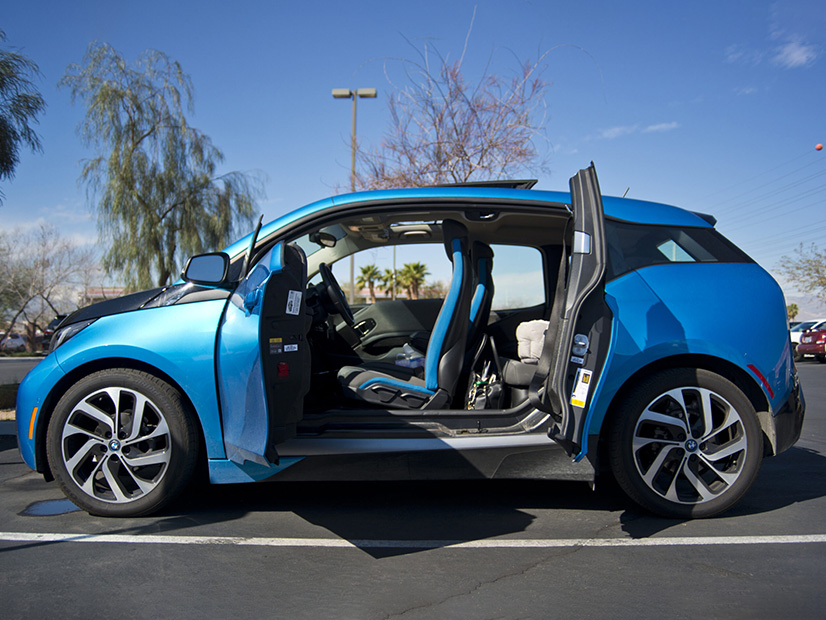
Although Nevada’s newly adopted Clean Cars regulation won’t take effect until model year 2025, the rule will allow auto manufacturers to start earning zero-emission vehicle credits starting in January.
The so-called early action credits have won the praise of environmental advocates, who say it will help bring more zero-emission vehicles (ZEVs), and a greater variety of models, to Nevada car buyers in a timelier manner.
The early ZEV credits will be available for model year 2022, 2023 and 2024 vehicles that automakers deliver for sale in Nevada.
Western Resource Advocates (WRA) said in a release that Nevada’s ZEV crediting system “offers a promising model for other states contemplating adoption of ZEV standards.”
“The Nevada plan … provides certainty to the auto industry while also ensuring the rule attains the maximum environmental benefits,” the group said.
Final Approval Granted
The Nevada Legislative Commission voted to pass the Clean Cars Nevada regulation on Friday in the final step of the approval process. Nevada now joins 14 other states and the District of Columbia in adopting Clean Cars regulations.
Under the federal Clean Air Act, states have an option of adopting California’s Clean Cars rules instead of using federal vehicle-emission standards.
California’s current Advanced Clean Cars regulation, which the California Air Resources Board (CARB) first adopted in 2012, includes two programs. The low-emission vehicle (LEV) program aims to reduce tailpipe emissions of greenhouse gases and smog-forming pollutants.
The second component, the ZEV program, has a goal of increasing the supply of zero-emission vehicles available to car buyers in the state.
Clean Cars Nevada includes both the LEV and ZEV programs. The Nevada Department of Environmental Protection developed the regulation.
“Clean Cars Nevada is a huge victory for the Silver State,” Nevada Gov. Steve Sisolak said in a release. “Transportation is the No. 1 source of greenhouse gas emissions in Nevada and drives disproportionate pollution burdens for historically underserved communities.”
Calculating Credits
ZEV credit requirements are calculated as a percentage of vehicles that a car maker sells in the state. Under California’s Advanced Clean Cars, the percentage has been increasing over time and will top off at a 22% requirement for model year 2025.
That creates an interesting timing issue for Nevada, where the Clean Cars program starts with model year 2025 and a 22% ZEV credit requirement.
To help meet the new requirement, automakers can bank early action credits for model years 2022, 2023 and 2024 and then apply them toward the ZEV requirement in model year 2025.
After that, car manufacturers can use a proportional credit allowance to help meet Nevada’s credit requirement for model year 2026. The proportional credit is based on an automakers’ ZEV credit balance in California.
In general, groups such as WRA have concerns about the proportional credit, which they say encourages manufacturers to sell electric vehicles in California rather than in other states.
But in Nevada, the use of the proportional credits is delayed to model year 2026. The Nevada plan gained the support of auto manufacturers, environmental advocates and state officials, according to WRA.
“If you do credits poorly, you essentially get a rule that’s less effective,” WRA’s Transportation Electrification Manager Aaron Kressig told NetZero Insider.
The ZEV credit is determined from factors including the distance a vehicle can travel on a single charge and whether it is a plug-in hybrid or fully electric. With a 22% ZEV credit requirement, ZEVs will account for about 8% of cars available for sale in the state that model year, WRA has estimated.
ACC II on the Horizon
The adoption of Clean Cars Nevada comes as CARB is in the process of crafting an Advanced Clean Cars II (ACC II) regulation for model years 2026 and beyond. (See CARB Plan Would Allow Interstate Transfer of ZEV Credits.)
The regulation is expected to require auto manufacturers to provide 100% zero-emission cars for sale by 2035, consistent with a 2020 executive order from Gov. Gavin Newsom.
CARB expects to present ACC II rules to its board in June 2022.
That raises the question of whether Nevada will move to ACC II. Without a change to Clean Cars Nevada, the ZEV credit requirement would remain at 22%.
NDEP said in an email that it is participating in the development of ACC II, along with other Clean Cars states.
“NDEP will carefully consider the proposal and vet it for adoption in Nevada with stakeholders here before making a recommendation to the Nevada State Environmental Commission on whether to adopt the anticipated rulemaking for Nevada,” the agency said.
Kressig said he expects to see Nevada and other Clean Cars states start wrestling with the issue of a new regulation in 2023, after California is expected to adopt the new rule.
“All those states will have to reevaluate whether they want to take on ACC II,” he said.
States that have adopted Clean Cars regulations include California, Colorado, Connecticut, Maine, Maryland, Massachusetts, New Jersey, New York, Oregon, Rhode Island, Vermont and Washington as well as the District of Columbia. They were joined this year by Virginia, Minnesota and Nevada.


